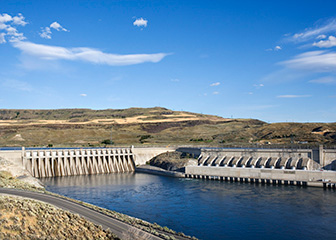How to Become an Environmental Engineer About this section

A bachelor’s degree is needed to become an environmental engineer.
Environmental engineers must have a bachelor’s degree in environmental engineering or a related field, such as civil, chemical, or mechanical engineering. Employers also value practical experience. Therefore, cooperative engineering programs, in which college credit is awarded for structured job experience, are valuable as well. Getting a license improves the chances for employment.
Education
Students interested in studying environmental engineering should take high school courses in chemistry, biology, physics, and mathematics, including algebra, trigonometry, and calculus.
Entry-level environmental engineering jobs require a bachelor's degree. Bachelor's degree programs typically last 4 years and include classroom, laboratory, and field studies. Some colleges and universities offer cooperative programs where students gain practical experience while completing their education.
At some colleges and universities, a student can enroll in a 5-year program that leads to both a bachelor’s and a master's degree. A graduate degree allows an engineer to work as an instructor at some colleges and universities or to do research and development.
Many engineering programs are accredited by ABET (formerly the Accreditation Board for Engineering and Technology). Some employers prefer to hire candidates who have graduated from an accredited program. A degree from an ABET-accredited program is usually necessary to become a licensed professional engineer.
Important Qualities
Communication skills. Environmental engineers must be able to write clearly so others without their specific training understand their plans, proposals, specifications, findings, and other documents.
Problem-solving skills. When designing facilities and processes for treating wastewater and other pollution, environmental engineers strive to solve several issues at once, from workers’ safety to environmental protection. They must be able to identify and anticipate problems to prevent losses for their employers, safeguard workers’ health, and mitigate environmental damage.
Reading-comprehension skills. Environmental engineers often work with business people, lawyers, and other professionals outside their field. They often are required to read and understand documents that are outside their scope of training.
Systems analysis. Environmental engineers sometimes have to design systems that will be part of larger ones. They must be able to foresee how the proposed designs will interact with other components in the process, including the workers, machinery, equipment, or the environment.
Teamwork. Environmental engineers must be able to work with others toward a common goal. They usually work with engineers and scientists who design other systems and with the technicians and mechanics who put the designs into practice.
Licenses
Environmental engineers are encouraged to obtain a professional engineer (PE) license. Licensure generally requires the following:
- A degree from an engineering program accredited by ABET
- A passing score on the Fundamentals of Engineering (FE) exam
- Relevant work experience
- A passing score on the Professional Engineering (PE) exam
The initial Fundamentals of Engineering (FE) exam can be taken after graduation. Engineers who pass this exam are commonly called engineers in training (EITs) or engineer interns (EIs). After getting suitable work experience, EITs can take the second exam, called the Principles and Practice of Engineering.
Several states require continuing education for engineers to keep their license. Most states recognize licensure from other states, if the licensing state’s requirements meet or exceed their own requirements.
Certification
After licensing, environmental engineers can earn certification known as Board Certified from the American Academy of Environmental Engineers. This certification is similar to that for physicians and shows that an environmental engineer has expertise in one or more areas of specialization.
Advancement
As beginning engineers gain knowledge and experience, they move on to more difficult projects, and they have greater independence to develop designs, solve problems, and make decisions. Eventually, environmental engineers may advance to become technical specialists or to supervise a team of engineers and technicians.
Some may even become engineering managers or move into executive positions, such as program managers. However, before assuming a managerial position, an engineer usually works under the supervision of a more experienced engineer.








